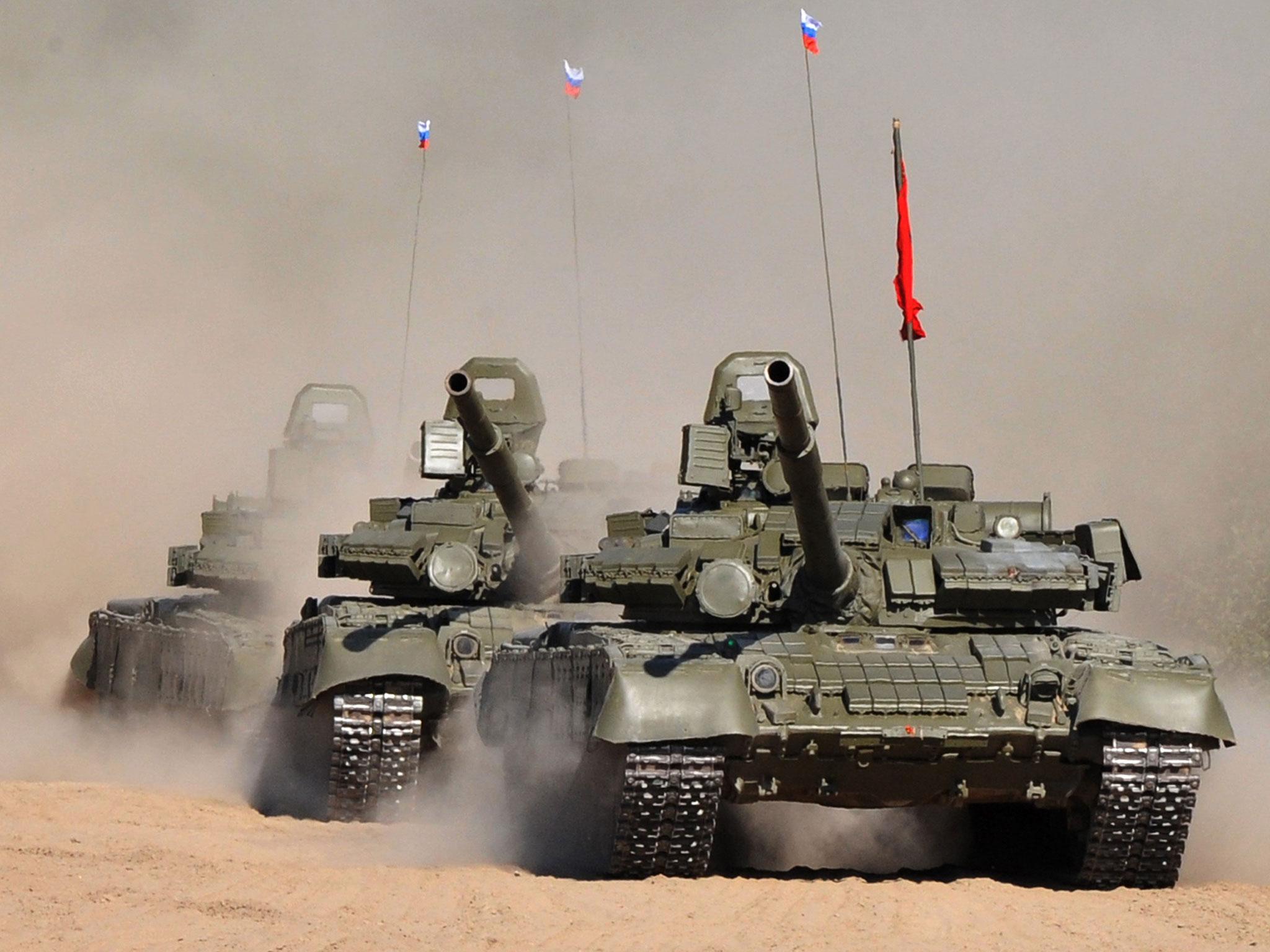Russia 'preparing bring to up to 3,000 Soviet-era T-80 tanks back into service'
Upgraded tanks expected to bridge gap until production of high-tech Armata supertank

Russia is reportedly preparing to upgrade its Soviet-era T-80 battle tanks in order to bring them back into service.
Up to 3,000 of the tanks, which entered service in 1976, will be updated to bring their combat power closer to the current T-90 model.
"At present, the preparative works to start the modernisation of the first T-80BV MBTs are at a final stage," a defence industry source told military magazine Jane's Defence Weekly.
The "overhaul and modernisation" of the tanks "will be launched next year" the source added. They said the number of tanks to be upgraded will be determined by the military.

Updated versions of the armoured combat vehicle will reportedly feature an upgraded fire-control system used by the T-90, an updated energy generator and advanced explosive reactive armour plates.
The modified tanks will be suitable for use in the Arctic, Far East and Siberia, the source said.
Around 550 T-80 tanks are still in service in the Russian military.
They are expected to bridge the gap until Russia completes the development of its new high-tech Armata supertank.
British military intelligence issued a warning casting doubt on the UK's ability to combat the threat of the new T-14 tanks.
The report said the tank was already lighter, faster and stealthier than any Western rival, and could be fitted with the same radar system currently used by Russian fighter jets.
The Armata’s main advantage over existing vehicles is the inclusion of an unmanned turret, which is controlled remotely from an isolated armoured capsule.
It only requires two people to operate the vehicle and it also boasts a state-of-the-art radar system that can simultaneously track up to 40 ground and 25 air targets within a 60-mile (100km) radius.
The Kremlin has previously said it plans to build 120 Armata tanks a year from 2018.
On Monday, US State Department spokesman John Kerry warned Moscow's deployment of Iskander and S-400 missiles to eastern Europe was "destabilising" and urged Moscow to "refrain from words or deeds that are inconsistent with the goal of promoting security and stability".
President Vladimir Putin's spokesman, Dmitry Peskov, told reporters that the Russian military needs to respond to what he described as Nato's aggressive moves.
"Russia is doing what is necessary to protect itself amid Nato's expansion toward its borders," Mr Peskov said.
"The alliance is a truly aggressive bloc, so Russia does what it has to do. It has every sovereign right to take necessary measures throughout the territory of the Russian Federation."
Moscow has also deployed new anti-ship missiles on Pacific islands controlled by Russia but also claimed by Japan.
Bal and Bastion missile systems have been stationed on the islands, called the southern Kurils by Russia and the Northern Territories by Japan, the Boyevaya Vakhta (Combat Duty) newspaper of Russia's Pacific Fleet reports.
Join our commenting forum
Join thought-provoking conversations, follow other Independent readers and see their replies
Comments